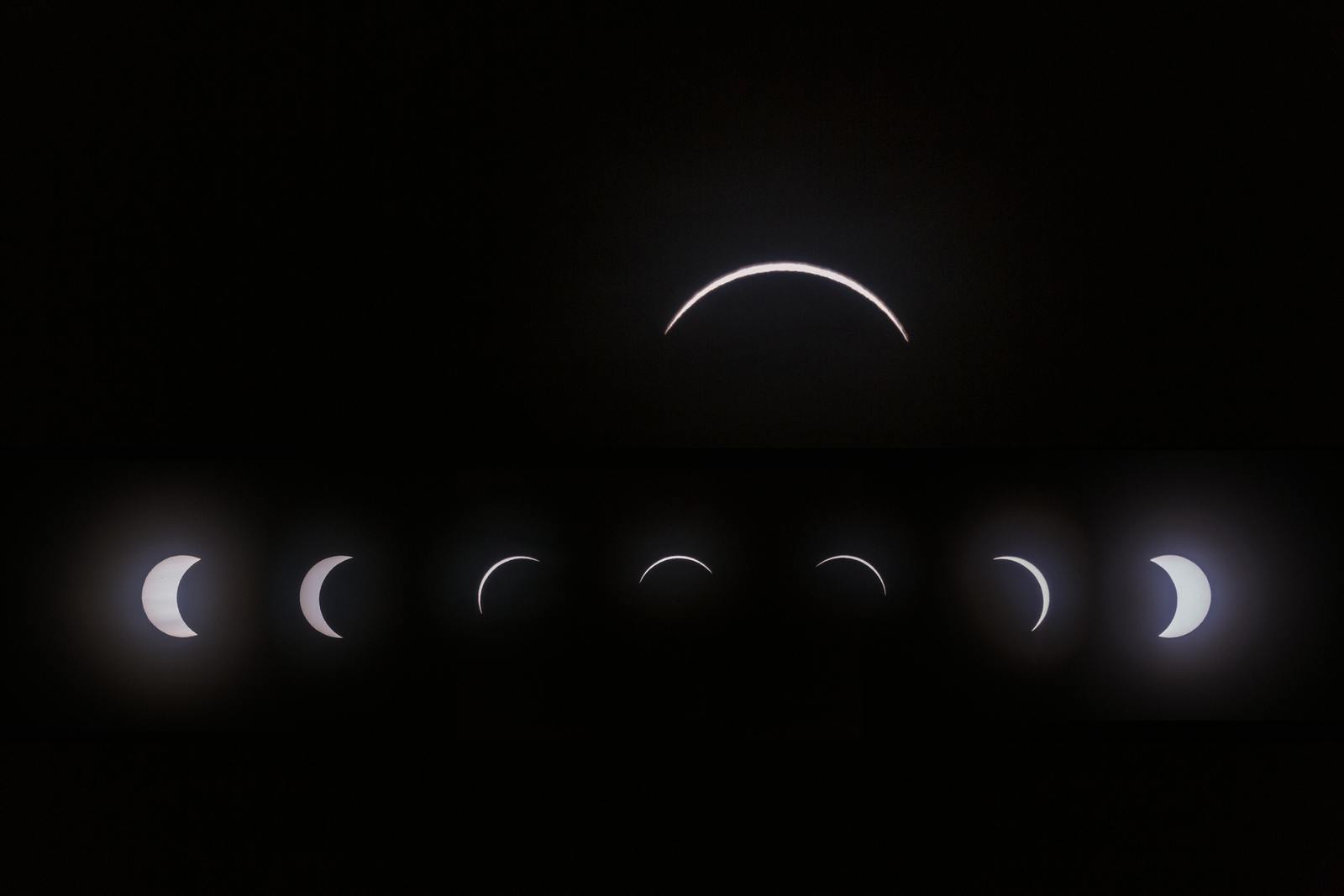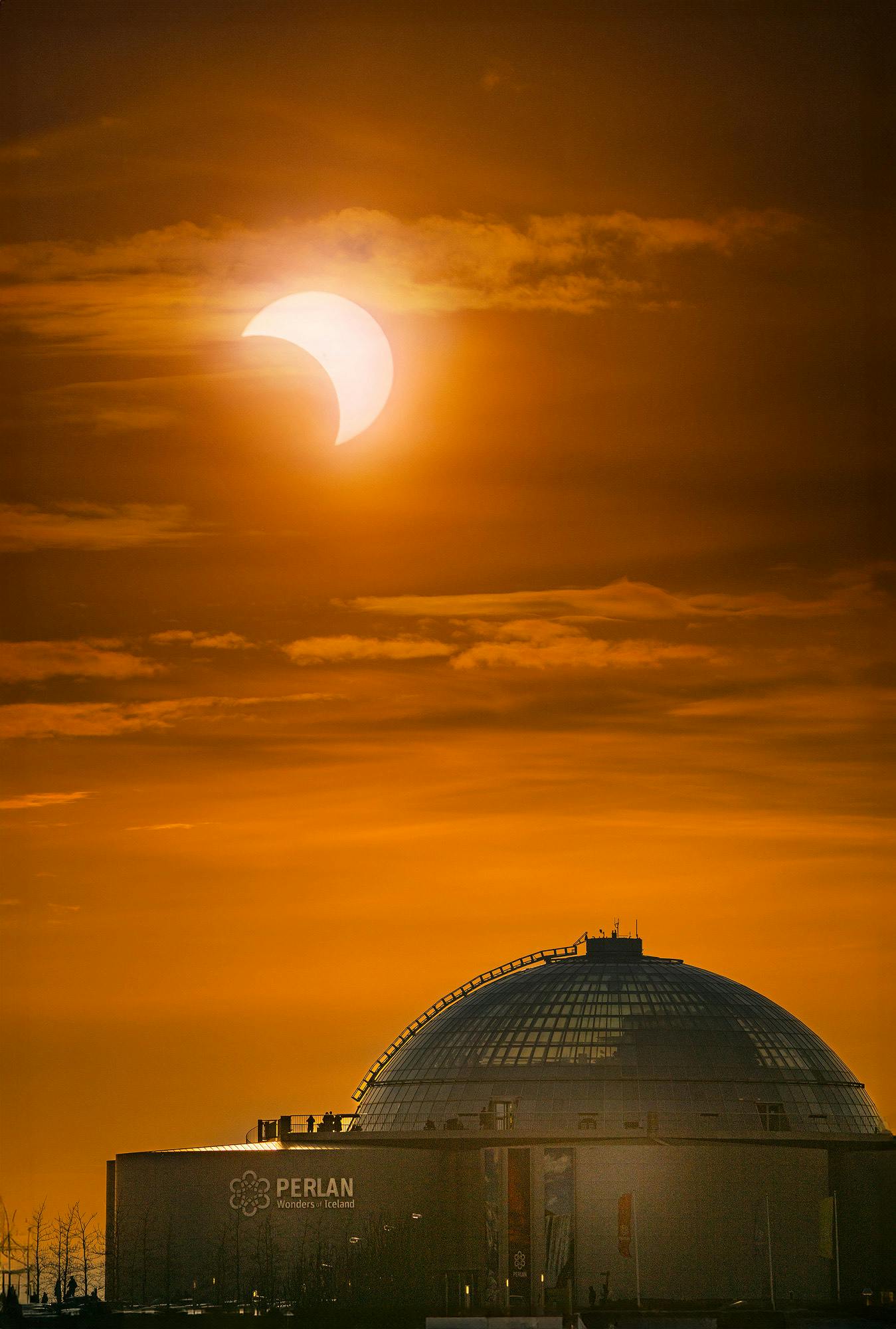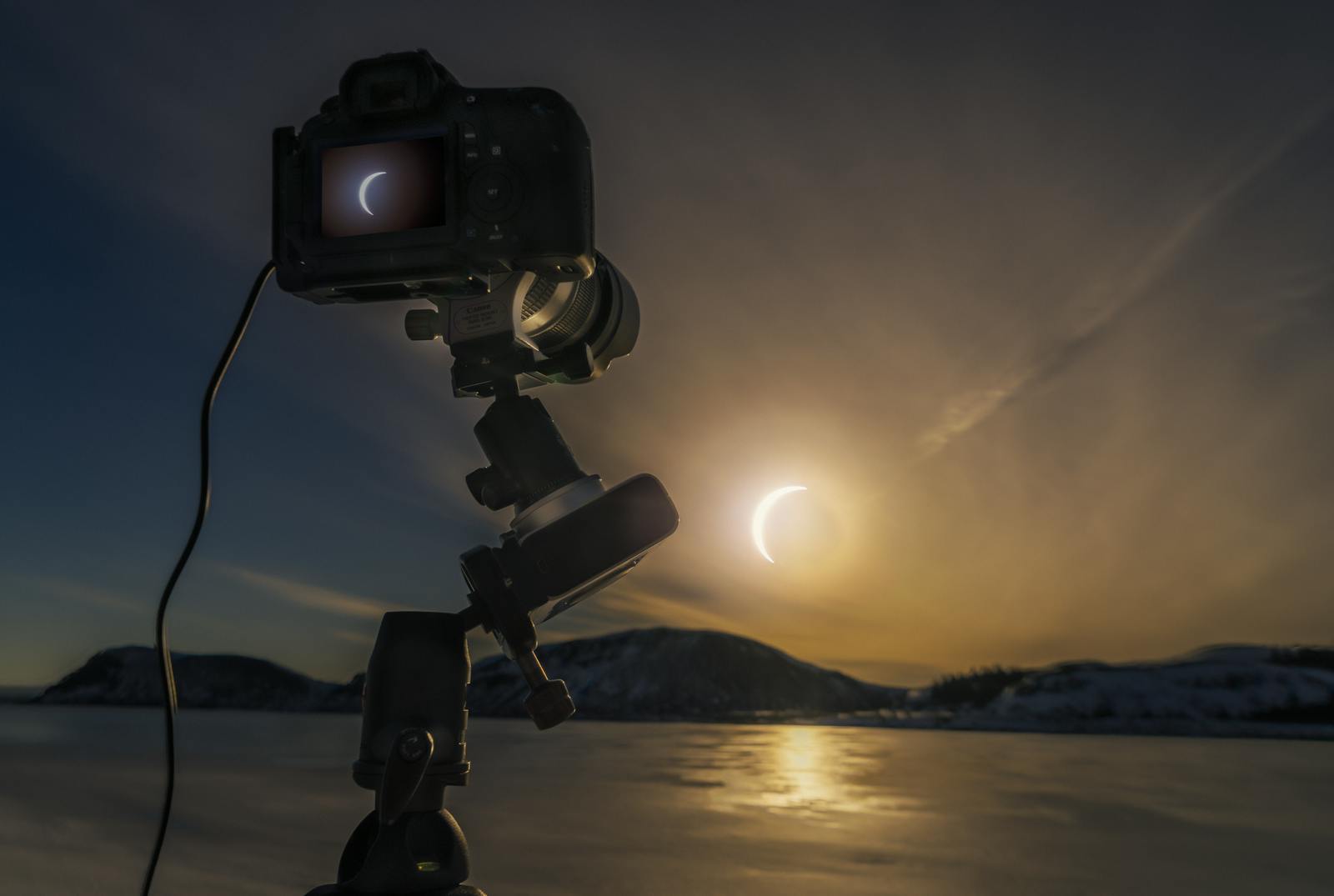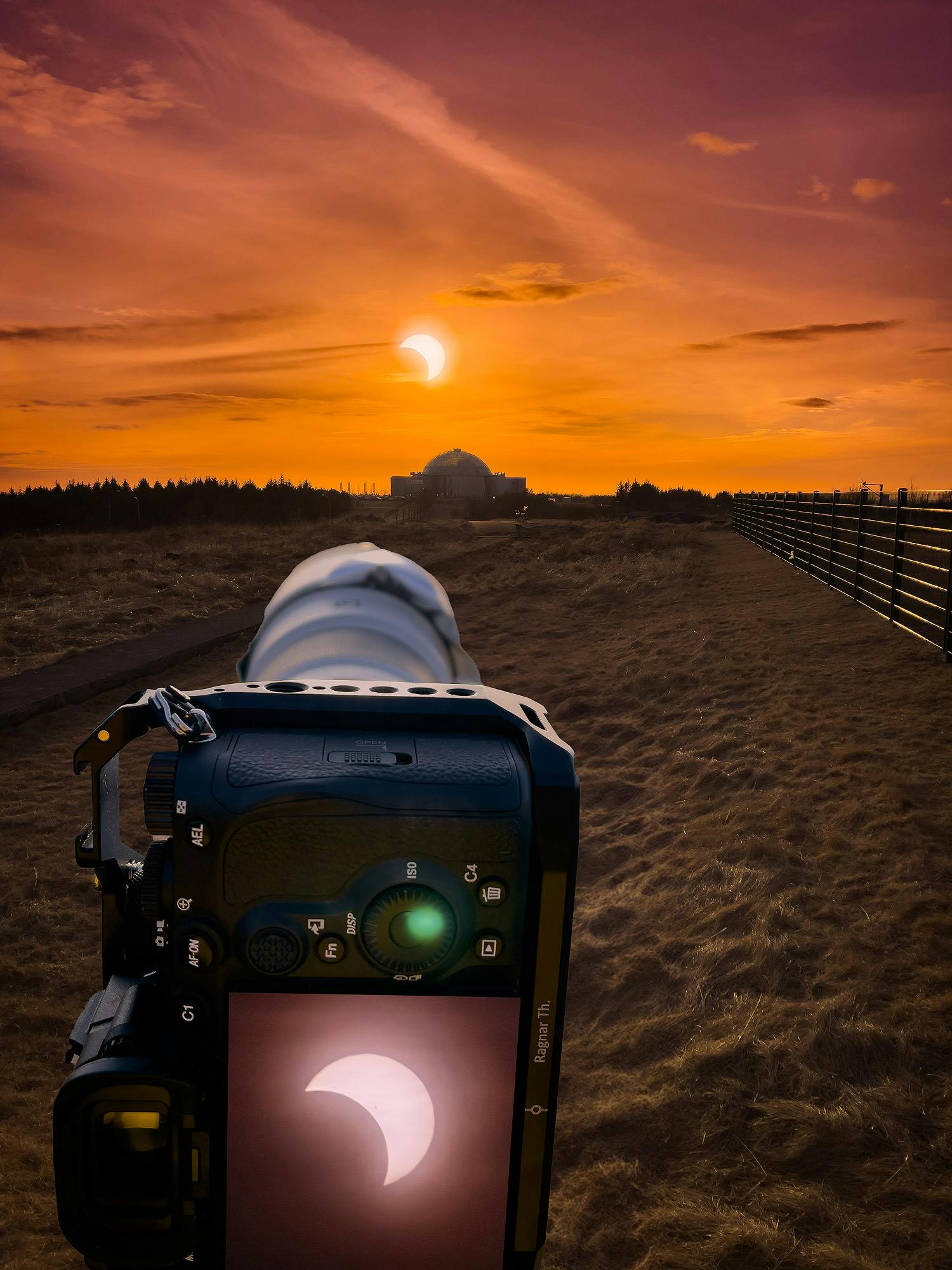
How Are Solar Eclipses Predicted?
A solar eclipse captivates people around the world as the moon passes between the Earth and the sun, casting a shadow and briefly turning day into twilight. People have marvelled at solar eclipses for centuries, but it is only with the development of advanced astronomy that we can accurately predict these rare events. Today, astronomers can forecast not only when and where an eclipse will occur but also the exact path of its shadow across the Earth.
For tourists visiting Iceland, the opportunity to witness a solar eclipse in this breathtaking landscape is particularly exciting. Iceland is set to experience a total solar eclipse on August 12, 2026, and many visitors will head to places like Perlan in Reykjavík to enjoy the best views. In this article, we’ll explore how solar eclipses are predicted, from ancient methods to modern techniques, and why Iceland is such a great place to view them.

The Science Behind Solar Eclipse Predictions
The ability to predict a solar eclipse is based on the knowledge of celestial mechanics—the study of how planets, moons, and other heavenly bodies move through space. Solar eclipses occur due to the precise alignment of the Earth, moon, and sun. The moon must be in its new moon phase when directly between the Earth and the sun. However, solar eclipses don’t happen every month because the moon’s orbit is slightly tilted relative to the Earth’s orbit around the sun. This tilt means that most of the time, the moon passes above or below the sun rather than ideally in line with it.
Astronomers use mathematical models that account for the orbits of the Earth and moon, their inclinations, and their elliptical paths to predict precisely when and where these alignments will occur. To understand the different phenomena associated with these alignments, explore our guide on types of solar eclipses.

Key Factors in Predicting Solar Eclipses
Several factors help astronomers predict solar eclipses with remarkable accuracy:
The Saros Cycle
One of the most critical tools for predicting eclipses is the Saros cycle, a period of approximately 18 years, 11 days, and 8 hours. After one Saros cycle, the Earth, moon, and sun return to nearly the same relative positions, making it possible to predict when similar eclipses will occur. This ancient method, used by Babylonian astronomers thousands of years ago, remains essential in modern eclipse prediction.
Orbital Dynamics
Astronomers also use highly detailed models of the moon’s orbit around the Earth and the Earth’s orbit around the sun. These models consider factors like the moon’s orbit’s tilt and the orbits’ elliptical shapes. Understanding these orbital dynamics allows scientists to calculate the exact dates, times, and locations of solar eclipses.
Eclipse Path and Duration
For a total solar eclipse, where the moon completely blocks the sun, astronomers can also predict the path of totality—the narrow strip of land where the eclipse will be fully visible. This requires precise calculations of the Earth’s rotation, the moon’s distance from Earth, and the speed at which the moon’s shadow moves across the planet. For the upcoming total eclipse in 2026, Iceland will be one of the prime locations to witness the path of totality.
How Modern Technology Enhances Predictions
With the help of computers and advanced astronomical software, predictions today are far more precise than those made in ancient times. Astronomers use satellite data, space observatories, and sophisticated algorithms to refine eclipse predictions. These tools allow them to calculate the timing of an eclipse down to the second and pinpoint the exact regions of Earth that will fall within the shadow.

Iceland is a Premier Destination for Solar Eclipse Viewing
The next total solar eclipse on August 12, 2026, will be visible across the westernmost part of Iceland, and Reykjavík offers an ideal vantage point for visitors. If you’re planning to capture this celestial event, check out our tips for solar eclipse photography for expert advice on getting the perfect shot
For tourists planning to experience the eclipse, Perlan in Reykjavík is a must-visit location. Located on Öskjuhlíð Hill, Perlan’s observation deck provides a perfect spot to watch the eclipse unfold, with its glass dome offering shelter from the elements while allowing for a clear view of the sky. In addition to its viewing platform, Perlan features exhibitions of Iceland’s natural wonders, making it an enriching stop for those interested in astronomy and geology.
How Ancient Cultures Predicted Solar Eclipses
Long before modern technology, ancient civilisations were fascinated by eclipses and sought to predict them. Some cultures believed eclipses were omens from the gods, while others developed more scientific approaches to understanding the phenomenon.
Babylonians
The Babylonians were among the first to recognise the Saros cycle. Despite not fully understanding the solar system’s mechanics, they used it to accurately predict eclipses.
Chinese Astronomers
Ancient Chinese astronomers also attempted to predict solar eclipses, believing them to be warnings of changes in imperial power. Their calculations were based on careful observations of celestial bodies and their movements.
Mayan Civilisation
The Mayans were skilled astronomers who developed sophisticated calendars, including solar and lunar eclipse predictions. They tracked the movements of the moon and sun and recorded eclipse events in their historical texts. See what a lunar eclipse it here.
Predicting solar eclipses has evolved from the rudimentary methods of ancient civilisations to the highly accurate science we have today. Through detailed calculations of orbital dynamics and modern technology, astronomers can forecast eclipses years, even decades, in advance.

FAQs
Who has accurately predicted a solar eclipse?
The Babylonians were among the first to accurately predict solar eclipses using the Saros cycle, which allowed them to forecast eclipses based on the recurring positions of the Earth, moon, and sun.
Why can’t astronomers predict eclipses?
Astronomers can predict solar eclipses with excellent accuracy today. However, in ancient times, without precise knowledge of celestial mechanics and modern tools, predictions were less reliable and often seen as mysterious or divine events.







